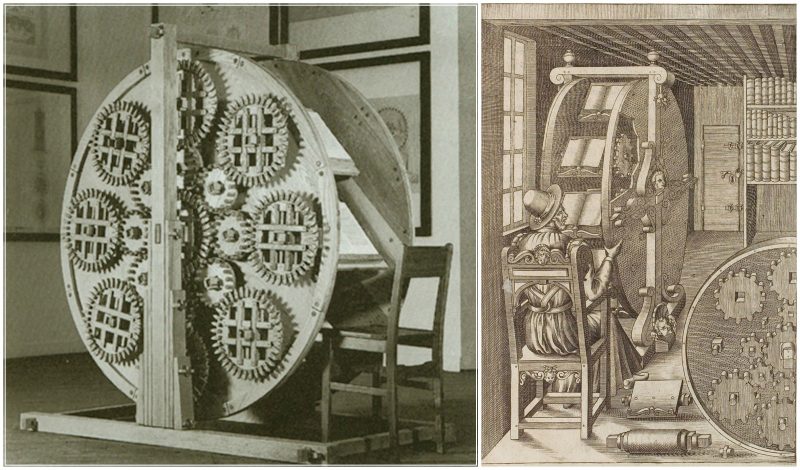The book wheel was first found in the designs of the Italian military engineer Agostino Ramelli in 1588. In most European countries in the 16th century, books were large and heavy and to do any research with them was, without doubt, a major undertaking. The wealthy, the scholars, and the priests did the most reading. Books were hand printed and expensive. According to an Anglo-Saxon document in Old English:
Beos Boc waes geal gewriten on feower
Wyken and kostede threo and fifti syllinges
(Translation: This whole book was written in four weeks and cost fifty-three shillings).
Fifty-three shillings was more than the average 16th century worker made in a year.
The book wheel was a bookcase with a design similar to a small Ferris wheel. A person could turn the wheel by hand or by a foot pedal, moving the books in a north to south fashion.
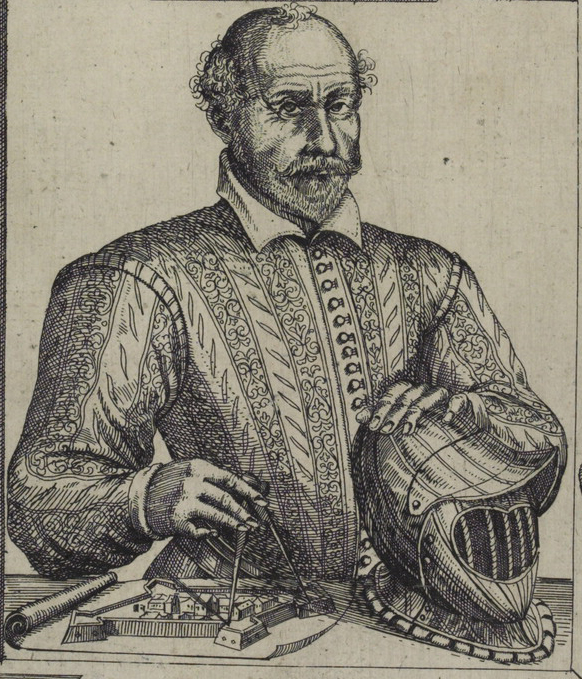
Ramelli included a complex epicyclical gearing arrangement previously used in astronomical clocks–this wasn’t necessary since gravity would perform the same function, but it added to the aesthetic value. Many book wheels were made from Ramelli’s design, although Ramelli never actually built one himself.
Joseph Needham, a British scientist, sinologist, and historian of Chinese technology, stated that revolving bookcases had their origins in China, “perhaps a thousand years before Ramelli’s design.” The reading wheel has been called one of the earliest information retrieval devices and is a predecessor to modern e-readers such as Kindle and Nook, which allow readers to accumulate huge amounts of information in one place. One could even argue that the book wheel was an early microfiche machine.
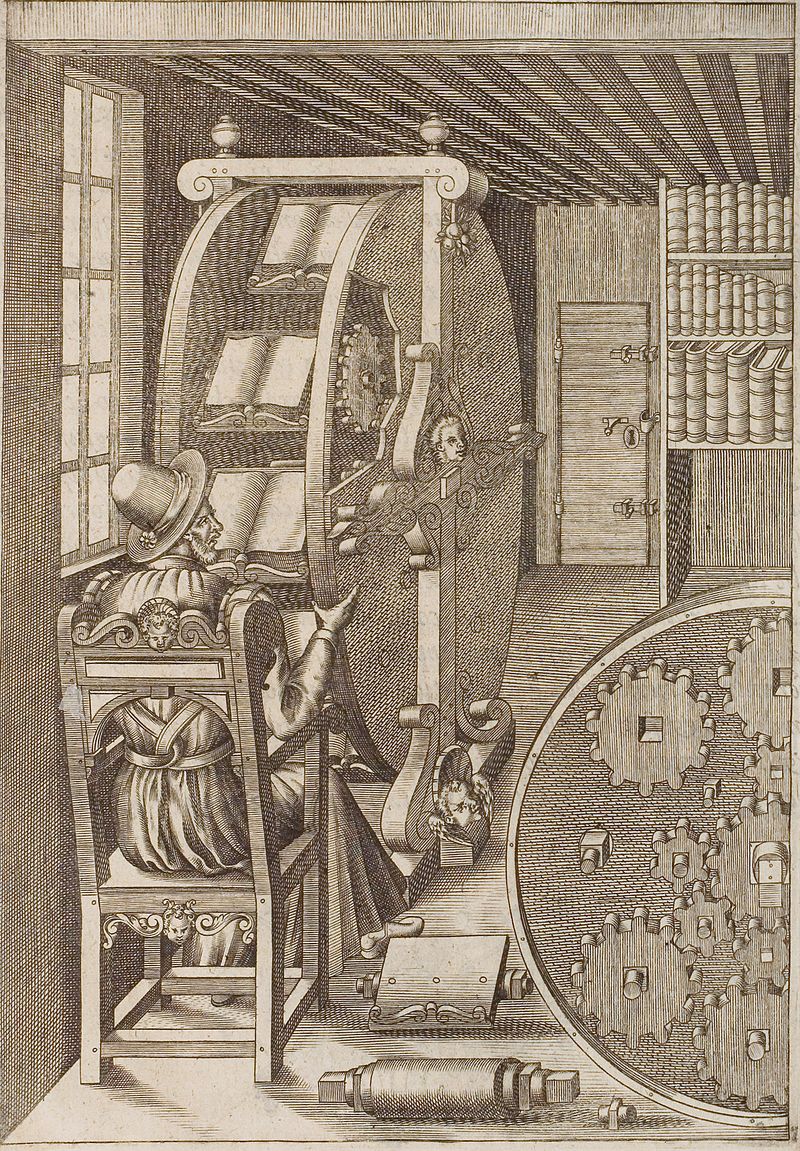
Today, the book wheel is appreciated for its historical significance and aesthetic appeal. Ramelli’s design has been reinvented by artists such as architect Daniel Libeskind, who fashioned a type that was a reverse design of Ramelli’s interpretation and was entitled the “Reading Machine” at the Venice Architecture Biennale in 1986.
Ramelli published a book in Paris in 1588, entitled The Various and Ingenious Machines of Captain Agostino Ramelli, in which he wrote:
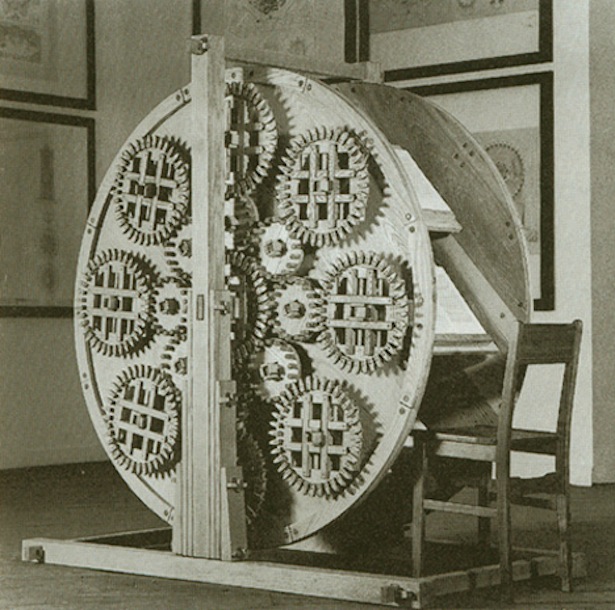
“This is a beautiful and ingenious machine, very useful and convenient for anyone who takes pleasure in study, especially those who are indisposed and tormented by gout. [Gout is a type of arthritis caused by excess uric acid in the blood, a common ailment in the past]. For with this machine a man can see and turn through a large number of books without moving from one spot. Moreover, it has another fine convenience in that it occupies very little space in the place where it is set, as anyone of intelligence can clearly see from the drawing.
This wheel is made in the manner shown, that is, it is constructed so that when the books are laid on its lecterns, they never fall or move from the place where they are laid, even as the wheel is turned and revolved all the way around. Indeed, they will always remain in the same position and will be displayed to the reader in the same way as they were laid on their small lecterns, without any need to tie or hold them with anything.
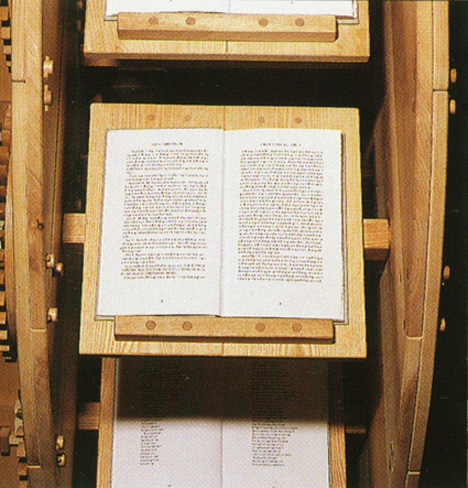
“This wheel may be made as large or as small as desired, provided the master craftsman who constructs it observes the proportions of each part of its components. He can do this very easily if he studies carefully all the parts of these small wheels of ours and the other devices in this machine. These parts are made in sizes proportionate to each other. To give fuller understanding and comprehension to anyone who wishes to make and operate this machine, I have shown here separately and uncovered all the devices needed for it, so that anyone may understand them better and make use of them for his needs.”
In 2012, French artist Léa Lagasse made her own style of the machine for a performance. It was built of plywood and given the name the Awaken Dreamer, and held only books written by Russian novelist Vladimir Nabokov.
